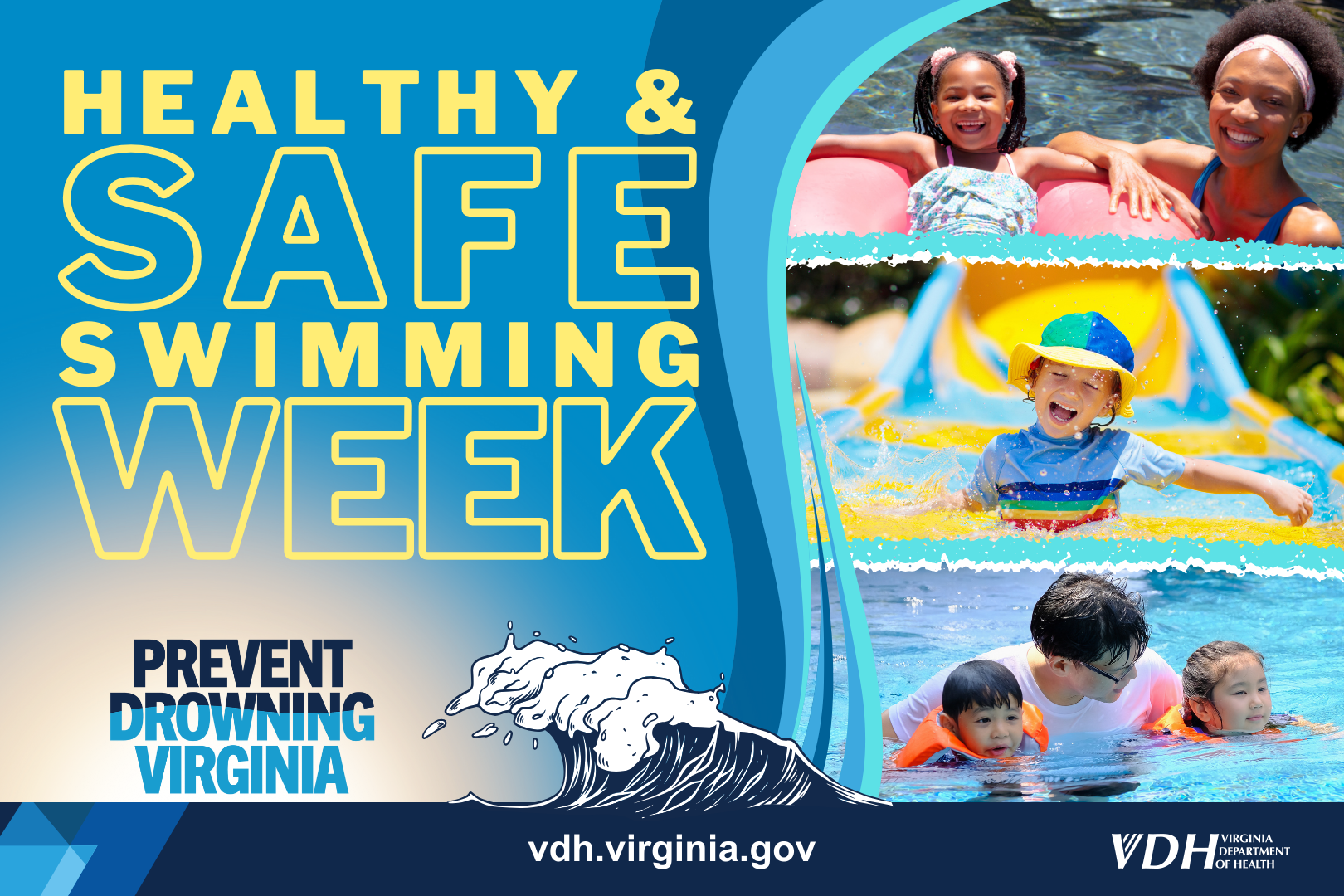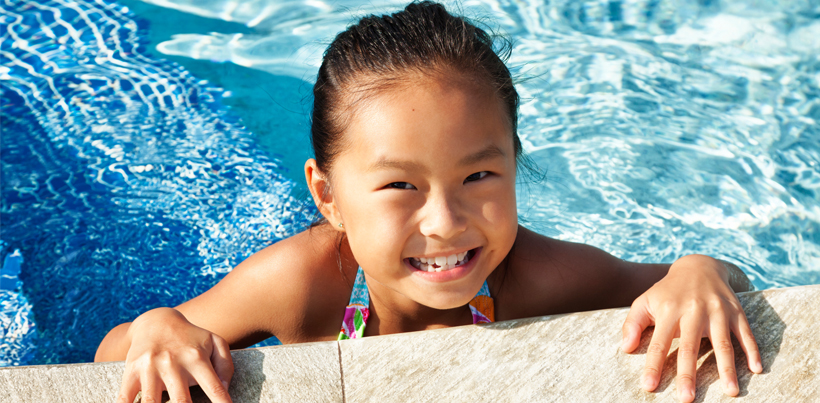The Virginia Department of Health (VDH) urges beachgoers and those using and maintaining swimming pools, spas, and water parks to focus on simple steps that can be taken to help ensure a healthy and safe swimming experience for everyone. Information available through the links below describes the role of swimmers, aquatics and beach staff, residential pool owners, and public health officials in preventing drowning, swimming-related injuries, and waterborne illnesses.
Healthy and Safe Swimming Week 2024
The week before Memorial Day, May 20-26, 2024, marks the 20th annual Healthy and Safe Swimming Week. Nationwide, communities will be collaborating and engaging in discussion about how to maximize the health benefits of water-based physical activity while minimizing the risk of recreational water–associated illness and injury.
Working together, we can help to prevent people from getting sick from waterborne illness.

Prevent Drowning
Drowning in Virginia
- From 2016-2020, 32% of drowning-related hospitalizations in Virginia were children aged 0-4 years.
- Almost 1 out of 2 (48%) hospitalizations among Virginia children aged 0-4 years from 2016-2020 were due to drowning in swimming pools.
- Every four days, one Virginia resident dies by drowning.
Drowning in the United States:
- Drowning kills more kids 1‒4 years old than anything else except birth defects.
- For children ages 5–14 years, drowning is the second leading cause of unintentional injury death after motor vehicle crashes.
- Every day, about 10 people in the U.S. die from drowning.
- While children are at highest risk, anyone can drown.
- Nearly 80% of people who die from drowning are male.
What you can do
Stay safe in and around the water:
- Make sure everyone has basic swimming and water safety skills.
- Formal swimming lessons in children as young as 1 year old can reduce the risk of drowning.
- Use U.S. Coast Guard–approved life jackets as directed.
- Remember that floaties, water wings, inner tubes, foams, and other air filled devices are TOYS and not safety devices and can often provide a false sense of safety to guardians and swimmers.
- Designate a responsible adult to closely and constantly supervise children in or near the water.
- Know how to recognize and respond to a swimmer in distress and how to perform CPR.
- No matter how strong of a swimmer you are, never swim alone.
- Don’t drink and swim. Alcohol slows your reactions and can make you make bad decisions. Stay out of the water if you’ve been drinking.
Help keep backyard pools safe:
- Prevent access to water when pool is not in use.
- Install and maintain barriers that fully enclose the pool and separate it from the house, like four-sided fencing.
- Use locks and alarms for windows and doors.
- Remove all toys from the pool area that might attract children to the pool when not in use.
Resources
Healthy and Safe Swimming Week Virtual Toolkit - 2024 This toolkit contains VDH brochures, posters, and links to other partners information in one convenient location.
CDC- Healthy Swimming Visit this website to download a variety of health promotion materials, including brochures, fact sheets, info-graphics, and more.
2024 Healthy and Safe Swimming Week Blog

